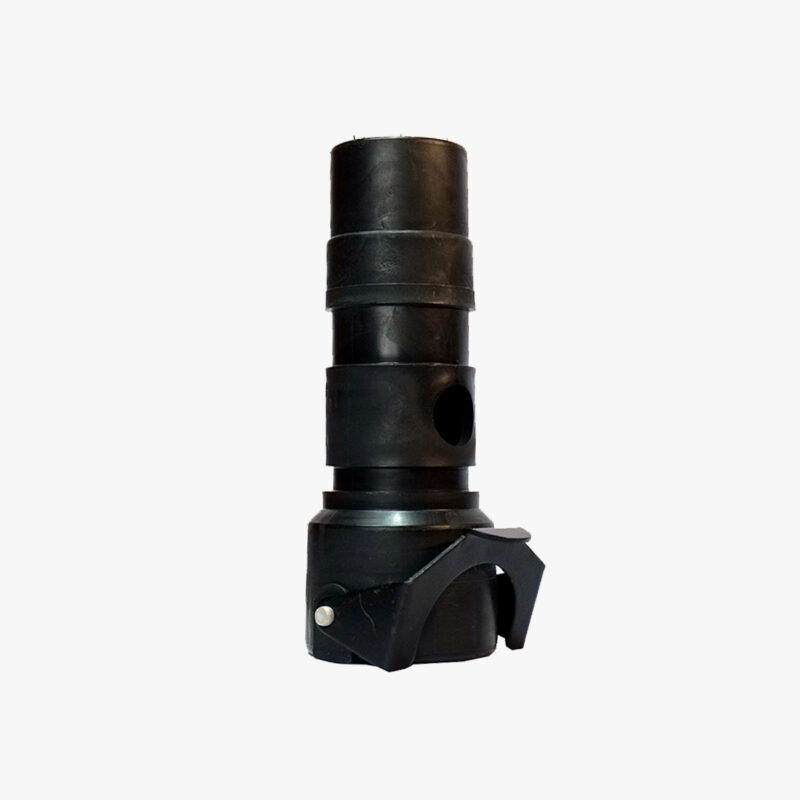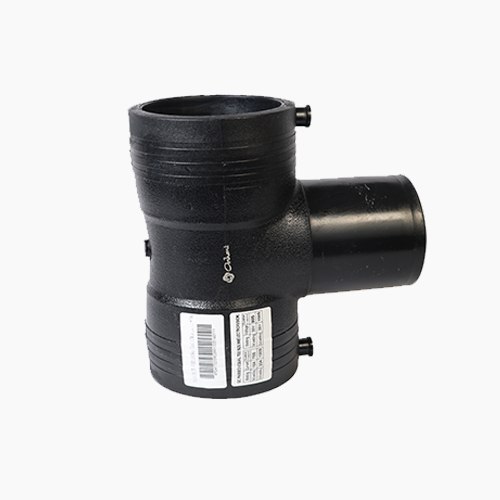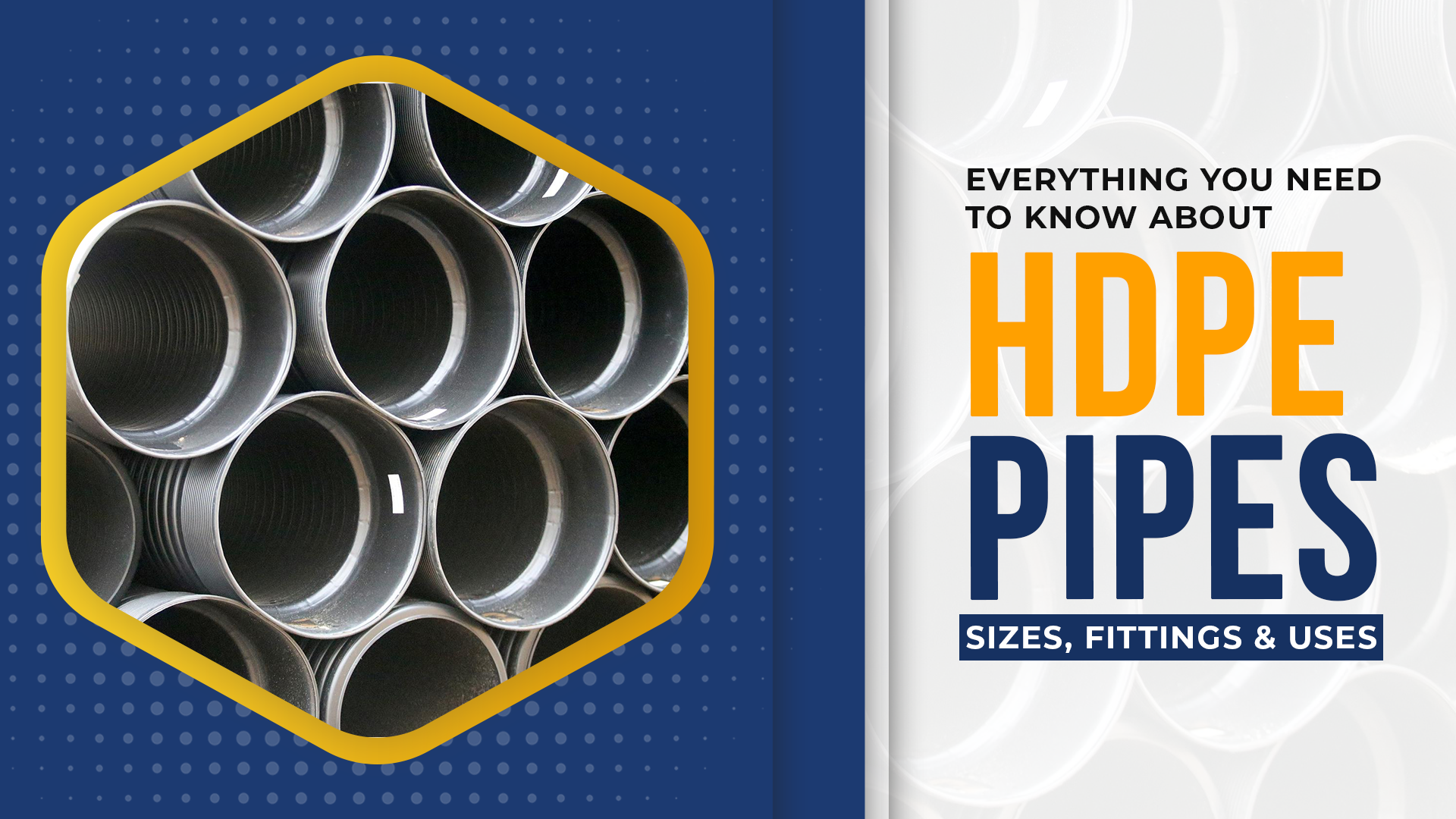For many years, concrete and metal pipes were used by individuals and companies for water and other purposes. These traditional pipes have major issues: they corrode, deteriorate, and leak frequently. They waste water, require costly repairs, have a short lifespan, and can fail entirely.
A major upgrade came with a material called HDPE (High-Density Polyethylene). This material is tough, bends without breaking, and works better for today’s infrastructure. HDPE pipe applications are wide because they fight off rust and chemicals, and their special fused joints create one solid piece that doesn’t leak. This makes choosing the right HDPE pipe sizes and fittings important for any project, all following strict HDPE pipe standards in India to ensure safety and quality.
What Are HDPE Pipes?

HDPE pipes are made up of a unique solid plastic. Even when utilized in challenging conditions or under extreme strain, this material is made to last for a very long time. HDPE is the best option for a wide range of HDPE pipe applications due to its unique benefits over older pipe materials. It can be utilized successfully in a wide range of circumstances due to its flexibility, jointing technique, and corrosion resistance.
Advantages of HDPE Pipes
The core benefits of this material directly influence the required HDPE pipe sizes and fittings and inform the stringent HDPE pipe standards India has established. Key advantages include:
- Corrosion Resistance: HDPE does not rust or corrode when exposed to water, aggressive soils, or many chemicals. This eliminates a primary cause of system failure in metal pipes.
- No Leaks: Instead of utilizing glue or sealants, heat is used to fuse HDPE pipes together. By combining them into one seamless piece, this removes the weak points where leaks usually start.
- Constructed to Last: The material is extremely durable. HDPE systems are designed to last for more than 50 years. They provide a long-term solution.
- Bends, Does Not Break: The pipe will not break when bent. This makes it easy to install around bends or barriers and resistant to earthquakes and changing soil.
- Improved Water Flow: The pipe’s interior is incredibly smooth. This facilitates easier water movement, increasing efficiency and perhaps lowering pumping expenses.
HDPE Pipe Sizes and Pressure Ratings: A Buyer’s Guide
Picking the right HDPE pipe means looking at two main things: how wide it is and how much pressure it can handle. These details are not random; they are set by official rules (HDPE pipe standards India) to keep everyone safe and make sure the pipe works correctly.

The key to pressure is something called the SDR (Standard Dimension Ratio). It’s a number found by a simple formula: the pipe’s width divided by the thickness of its wall.
- A low SDR number means the pipe has a thick wall. This strong wall can handle high pressure.
- A high SDR number means the pipe has a thin wall. This is best for low pressure jobs.
Knowing how size and strength work together is the most important part of choosing a pipe. The perfect HDPE pipe sizes and fittings you need depend completely on the job, or the HDPE pipe applications.
For instance, a big pipe carrying water for a whole city needs a low SDR to handle high pressure. A smaller pipe for watering a farm field can use a higher SDR for low pressure. A good manufacturer offers a full selection of pipes and fittings for every need, so you can always build a system that is just right.
Essential HDPE Fittings and Jointing Methods
The strength of an HDPE pipe system is solely dependent on its connections. The most crucial stage in building a secure network is how you connect the pipes and fittings. HDPE pipes are fused together using heat. It is different from traditional pipes that employ glue or mechanical joints. A smooth, long-lasting bond that won’t leak is produced by this welding procedure.
There are three primary methods for joining HDPE, each suited to specific needs and HDPE pipe applications.
- Butt Fusion
This method connects two pipes that are the same size. A special machine heats the ends until they get soft and melt. Then, the pipes are pushed together very firmly and held in place. As they cool down, they become one solid piece. This means the connection point is just as strong as the rest of the pipe.
Common Fittings: Butt fusion elbows, tees, and reducers.
2. Electrofusion
This method uses special connectors that have tiny heaters built right into them. You slide the pipe into the connector. Then, a machine sends electricity to the heater inside. The heat melts the inside of the connector and the outside of the pipe at the same time. As they cool, they become permanently fused together into one solid piece. This is a great technique for fixing a broken section or for making connections in places that are cramped and hard to reach.
Common Fittings: Electrofusion couplers, saddle fittings.
3. Mechanical Fittings
These are used when a temporary or demountable connection is needed, or to connect HDPE to a different material like a valve or a metal pipe. They use compression force to create a seal.
Common Fittings: Flange adapters, compression couplers.
The selection of appropriate HDPE pipe sizes and fittings and the use of certified procedures are governed by HDPE pipe standards in India, ensuring every connection is reliable and safe.
Applications of HDPE Pipes
HDPE can be used for a wide range of tasks. It is suitable for many applications. For each job, picking the right HDPE pipe sizes and fittings is important. All of these choices follow strict HDPE pipe standards in India to ensure safety and quality. Here are the main HDPE pipe applications:
- Drinking Water: Cities use HDPE pipes to carry clean water to homes. The pipes keep the water safe and don’t rust. Their smooth inside helps water flow easily.
- Farm Watering: Farmers use HDPE for irrigation systems like sprinklers. The pipes are light, easy to move, and can sit in the sun without damage. They are tough enough to last for years in the field.
- Factory Use: In plants, HDPE pipes move chemicals and other liquids. The plastic can handle strong substances that would eat through metal pipes.
- Sewage and Drainage: HDPE is used for sewer lines and storm drains. The welded joints don’t leak, so they keep groundwater clean. The smooth walls also prevent clogs.
- Natural Gas: The gas industry uses certified HDPE pipes for underground gas lines. The fused joints create a very safe system for carrying gas.
Each of these jobs requires a particular fitting, pressure rating, and pipe size. Working with a provider who has a large selection of items and the expertise to assist you in selecting the best one is crucial for this reason.
Why Choose Arihant Plast for Your HDPE Needs?
Choosing a company to provide your HDPE pipes is about more than just buying from a seller. You need a partner you can trust—one with real experience and a focus on quality. Arihant Plast is that kind of partner. We make sure your projects are built using strong, dependable, and certified materials.
Our product range is developed to meet diverse project specifications. We offer a complete selection of HDPE pipe sizes and fittings designed for various HDPE pipe applications. This comprehensive approach ensures compatibility and system integrity from main lines to connection points.
Our manufacturing processes and final products adhere to strict HDPE pipe standards India, including relevant BIS certifications. This compliance is not merely about meeting requirements. It represents our dedication to manufacturing pipes that perform as expected under specific pressure and environmental conditions.
At Arihant Plast, we make sure of three important things:
- Every pipe is the same. You get the same trusted quality, every single time you order.
- Clear information. We provide easy-to-understand instructions and details for the teams who design and install the pipes.
- Pipes you can rely on. Our products are built to perform exactly as promised.
Because we focus on these things, engineers and project managers can choose Arihant Plast HDPE pipes with full confidence.
Conclusion: The Smart Choice for a Sustainable Future
HDPE pipes provide a better way to move water and other supplies. They don’t rust. Their welded joints won’t leak, and they last much longer than old-fashioned pipes.
It is important to understand how HDPE pipe sizes and fittings work together. This helps you choose the right parts for your project, whether you are building city water systems or farm irrigation.
Following official HDPE pipe standards in India ensures quality and safety. These rules help engineers pick products that they know will work correctly.
Arihant Plast makes HDPE pipes and fittings that follow these important rules. Our products meet the needs of different projects and follow all industry standards.
Need help choosing the right parts? Look at our product catalog or talk to our support team. We offer detailed information to help you plan and order what you need.



